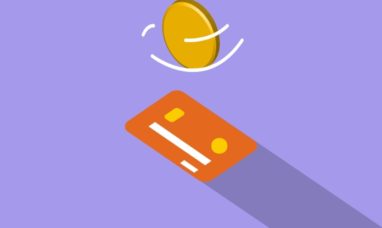Loans may be used for everything from covering unexpected costs to making a large purchase. Any time you take out a loan, the lending organization accepts your promise to repay the borrowed funds over a certain period, usually monthly. Your agreement to pay interest on the outstanding debt is the price you pay for this service, which results in your giving the financial institution more money than you initially loaned them. The most significant advantage of loans is that they usually cost less than credit cards, which often have relatively high-interest rates.
You can skip visiting a bank if you want to submit a loan application. A portable or stationary computer is unnecessary. Applying for loans from several lenders is becoming more feasible through your mobile device. Locating a suitable loan and applying for one via mobile device are both covered in this tutorial.
1. Choose the type of loan that best fits your needs
A wide variety of loans is available, but most banks only offer their customers a subset. Therefore, the first step is to choose the position you are interested in applying for. Personal loans are unsecured forms of credit that may be used for almost any purpose. You may only utilize certain loans for certain things, like a student loan for college or an auto loan for a new or used car. Short-term loans from a payday lender are often modest amounts that must be repaid with interest when the borrower receives their next paycheck.
2. Compare Secured Loans to Unsecured Loans
Think carefully about whether or not you have assets you can provide to the bank as security before proceeding with the application. Lenders can repossess and sell off collateral to recoup loan default costs. Collateral may take the form of anything of value, such as a car, a house, or a certificate of deposit. Secure loans are those that need collateral, whereas unsecured loans do not. Secured loans often have fewer restrictions and lower interest rates than unsecured ones.
3. Estimate how much cash you’ll need
Since the loan funds are given to you all at once, interest must be paid on the borrowed amount. Interest is calculated differently than on credit cards or other revolving lines of credit, where you only pay interest on the amount you actually borrow. With how interest is calculated, borrowing more than you need is risky. Before submitting an application, it’s a good idea to seek estimates or conduct a further study if you have any doubts.
4. Make a Detailed Budget
Financial institutions will look at your monthly income and spending to determine whether you qualify for a loan using a mobile app to determine if you can afford to make your loan payments. Include the amounts you spend on housing (rent or mortgage), utilities (utilities, insurance, and council rates), loans, credit cards, groceries, and transportation. Total up your regular bills to get an idea of where you stand.
5. Accumulate Verifiable Income Documents
Lenders will also consider your income when determining whether they would provide credit to you. Make a second list detailing every source of money entering your homes, such as jobs, government checks, pensions, and interest on investments. Write down how much money you get each month and from where. The sum of these amounts is your entire monthly revenue. Lenders have varying policies on whether or not child support payments may be counted as income. To streamline the application process, it’s best to do specific calculations both with and without it.
6. You should figure out how much monthly payment you can make
If you request a loan from a bank, they will look at how much money you bring in each month and how much you spend. Take the time to do your own preliminary budgeting. You’ll have a better idea of how much of a payment you can realistically make and will have a better chance of catching any mistakes. It begins with taking your entire revenue from Step 5 and deducting your total costs from Step 4. If the monthly payment for the loan is cheaper than the estimated project cost, then that is the loan you should get. Save some money each month and factor in costs like coffee and gas.
7. Examine Your Credit Report
Your credit history, as shown in your credit report, is the second most important factor lenders consider when deciding whether or not to approve your loan application after your demonstrated capacity to repay the loan. A free copy of your credit report is available every three months in Australia, as required by law. Obtaining reports from the big three credit reporting agencies—Equifax, Experian, and illion—can provide a comprehensive view of what lenders will see when they pull your credit.
8. Refute incorrect information
Pay close attention to your credit reports when they arrive. Check your credit record at all three bureaus to ensure accuracy, and keep an eye out for any erroneous or old debts you may have paid off. File a dispute with the credit reporting company if you discover any inaccuracies or anomalies. The vast majority of government entities now provide online filing options. You may file a complaint with the Office of the Australian Information Commissioner if the credit reporting agency does not fix the error. Only try to secure a loan once you’ve dealt with the problem. 6
9. Look into Available Mobile Apps
After verifying the accuracy of your credit report, you may start looking into loan providers using mobile loan application tools. While it may be tempting to first check out the app store on your smartphone, it’s more prudent to discover whether any reputable financial institutions in your area have mobile applications. If you take these precautions, you will be less likely to fall prey to loan fraudsters. It’s no secret that mobile lending applications are becoming more popular among lenders. Bank Australia, loans.com.au, Australian Mutual Bank, and MoneyMe are other respectable applications to consider.
10. Make sure your data is protected
Although applying for a loan on your smartphone saves time, it also leaves you vulnerable to identity theft. Applications include sensitive information that cybercriminals might use, such as your social security number, tax filing number, and driver’s license number. You should never submit a loan application from a public Wi-Fi network. Make sure you only get applications from trusted sources. Because the app stores potentially sensitive information, you should utilize your phone’s extra security features, such as facial recognition.
11. Compare rates and loan options
Before applying for a loan, you should compare loan rates and products from many lenders. Before downloading the app, you can check out a lender’s rates and offerings on your phone’s browser. Still, other lenders only access this data inside the app itself. You may need to download specific applications before learning more about their features. Consider the average or minimum rate disclosed by each company when comparing the various available rates. The rate you end up paying might be greater than the one shown.
12. Finalize the Loan Application
After researching, decide which of the possible loan companies is the most excellent fit for you, and submit an application to them. Applying elsewhere may be enticing, but only if your initial application is turned down; otherwise, your credit score may take a hit from too many inquiries into your account. Loan applications via mobile apps include a range of processes. The application procedure is simplified by most applications with clear on-screen instructions. Make sure you’re entering everything correctly so it can be processed faster.
13. Submit any paperwork that’s required
The bank’s underwriters will review your loan application and either approve your desired loan amount and terms or issue a counteroffer with a smaller loan amount and/or higher interest rate. It may be necessary to prove to the lender that you are who you say you are. You may have to provide a picture or scan of your most recent pay stub or bank statement. Avoid sending private information through email. Uploading it to the app will make you less vulnerable to identity theft.
Featured Image: Pexels © Mikael Blomkvist







